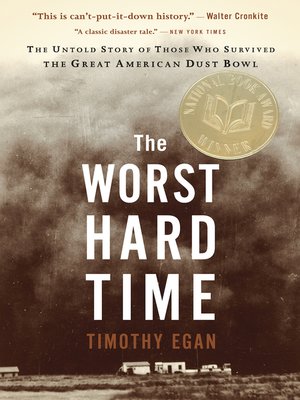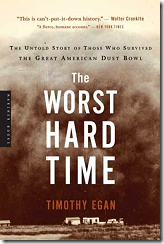

His intention was to document a largely untold chapter in American history: the stories of those who-unable or unwilling to abandon their hard-won farms and towns-had not fled. In 2002, Egan set out on an extraordinary odyssey, determined to record the experiences of Dust Bowl survivors before their eyewitness accounts were lost to history. By 1935, some 250,000 Americans had been forced from their no longer cultivatable farms.

Ultimately, the storms laid bare more than 100 million acres, an area the size of Pennsylvania. In the early 1930s, the dust blizzards began. As farmers plowed the prairie in their tractors-then coming into general use-they stripped the soil of the sod that had anchored it for millennia.

Homesteaders thronged to the high plains-once one of the world's great grasslands-during the 1920s, lured by cheap land and rising wheat prices. It was there, in the darkest hours of the Great Depression, that a decade-long series of dust storms ravaged the land and the settlers who tried to claim it. Even today, writes Timothy Egan, the daunting expanse of this nation's southern plains "scares people in the way that a big house can haunt after the lights go out." It is a landscape that intimidates, he says, largely as a consequence of "forced intimacy with a place that gives nothing back to a stranger." In his magisterial history of the region that came to be known as the Dust Bowl-the area encompassing the high plains of Colorado, Kansas, Nebraska, Oklahoma, Texas and New Mexico-Egan evokes a portrait of an all but forgotten land.


 0 kommentar(er)
0 kommentar(er)
